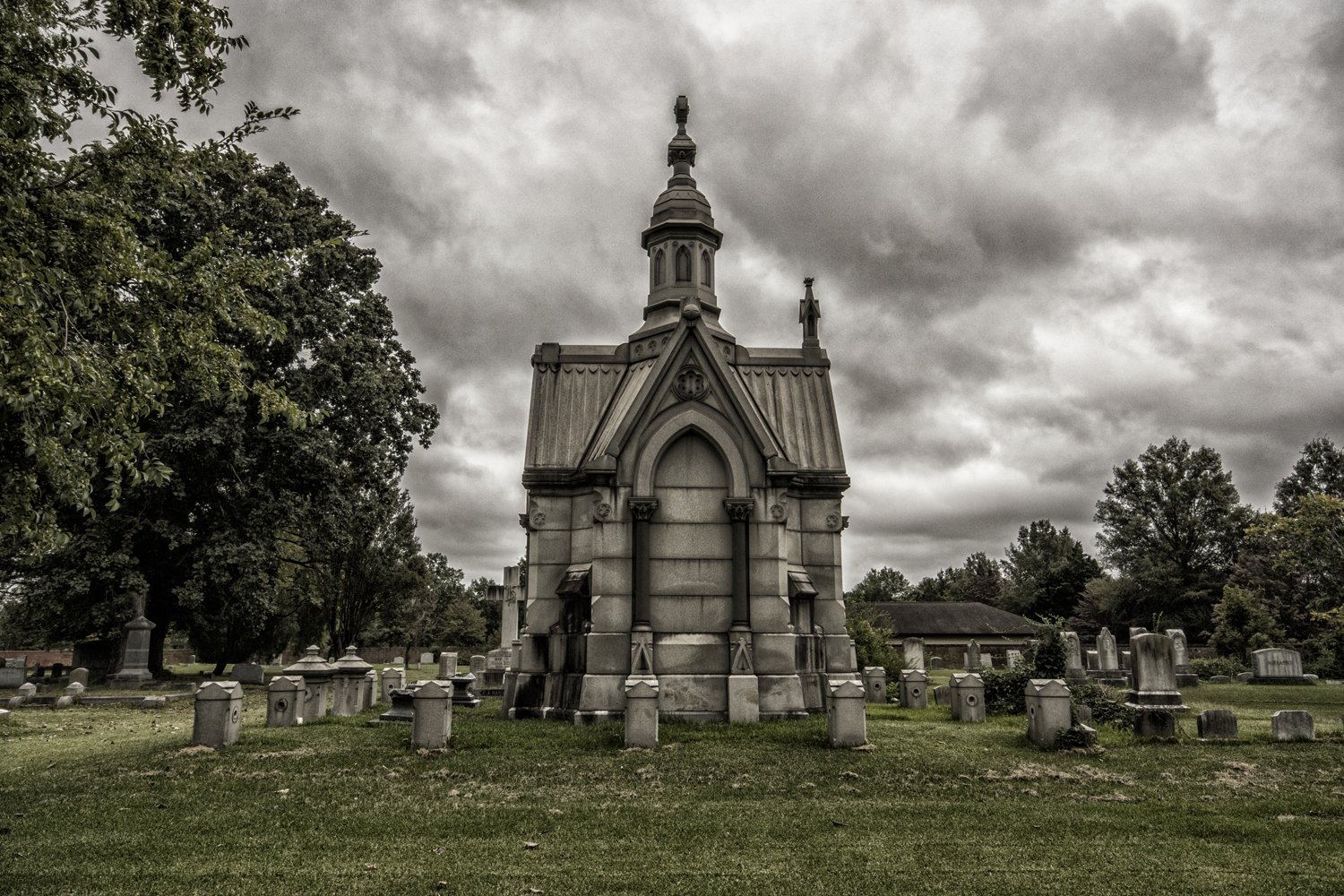The John B. LeKies Mausoleum
From an article posted on Historic Forest, “John B. LeKies was a French immigrant who arrived in Norfolk by way of Baltimore, Maryland in 1880. In Maryland, he met and married Emma Jane Bowen who was born in Maryland in 1848 and died in Norfolk on July 25, 1914.” LeKies was a “lumber baron” with the LeKies and Collins Lumber Company. At the time of his death, at age 51, his estate was estimated to be around $150,000 - which in 2021 would be around $4,114,650.
The mausoleum was built by John’s wife, Emma, who, in 1890 commissioned John D. Couper, of the Couper Marble Works, to begin the creation of the mausoleum. Couper “began business when Norfolk was little more than a Hamlet.” and his work reflected the neoclassic and idealistic style influenced by the Greek Revival that was popular at the time. It was completed in 1892. It is notable for its bronze doors and railings, and the gates and urns on the grounds surrounding the edifice. The stained glass window on the southern side is believed to have been created by Louis Comfort Tiffany.
Emma, became a local philanthropist donating funds for the organ and chimes for Epworth Methodist Church in Norfolk, and the LeKies Home for Aged Colored People and Orphans. At her death she was laid to rest beside her husband.
The screened window protects the stained glass window that is believed to be a Tiffany creation.
The building was shot from four different angles as each point of view presents unique features of the mausoleum.
Note the bronzed doors.
Early in January 1848, John D. Couper, of Norfolk rented a large lot at the corner of Main and Granby streets and opened a little marble shop, to manufacture Monuments. He had in his employ Isaac Ferebee, a slave whom he had hired as a stone setter and finisher, and who constituted the entire hired force of the establishment.




